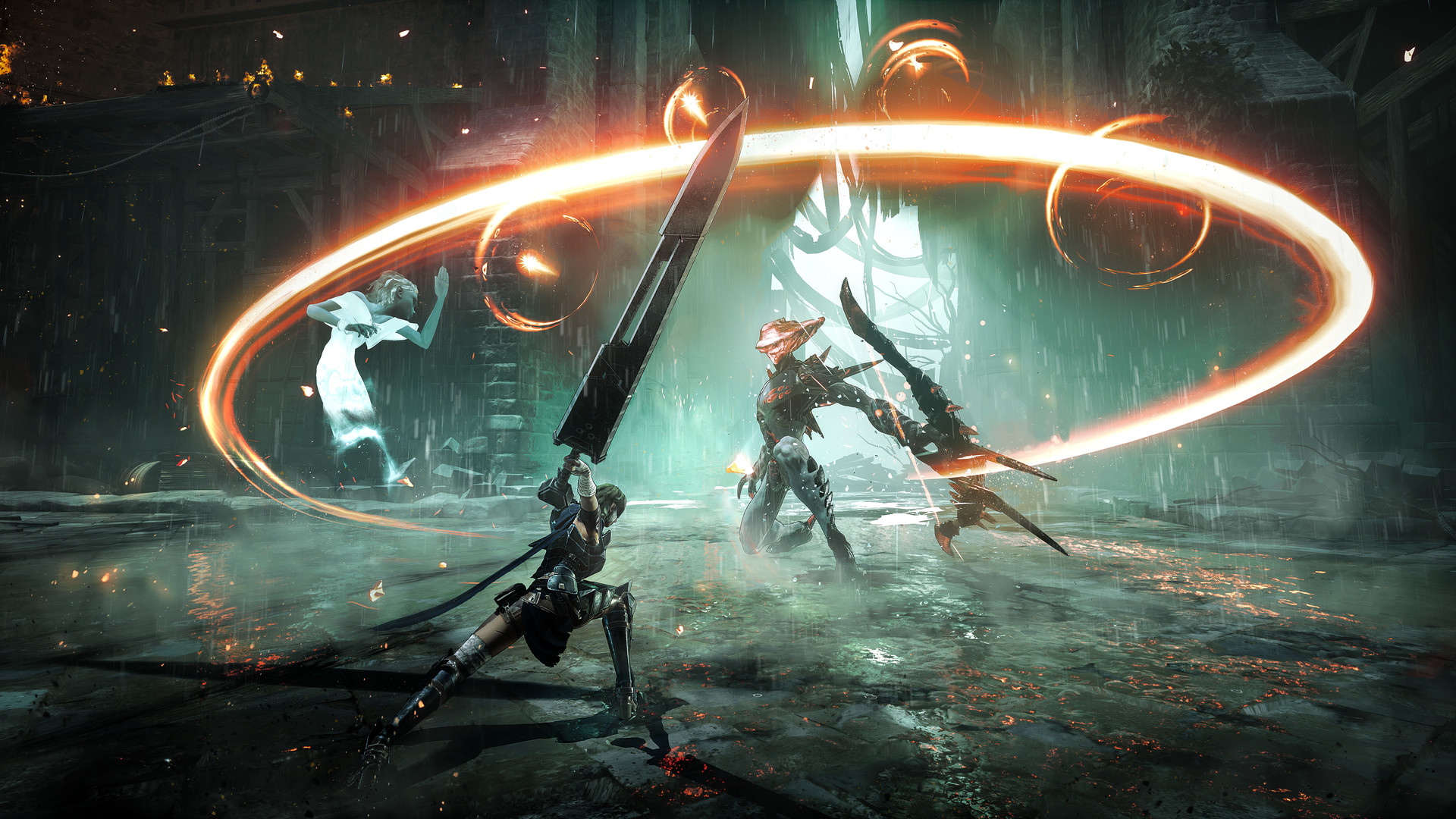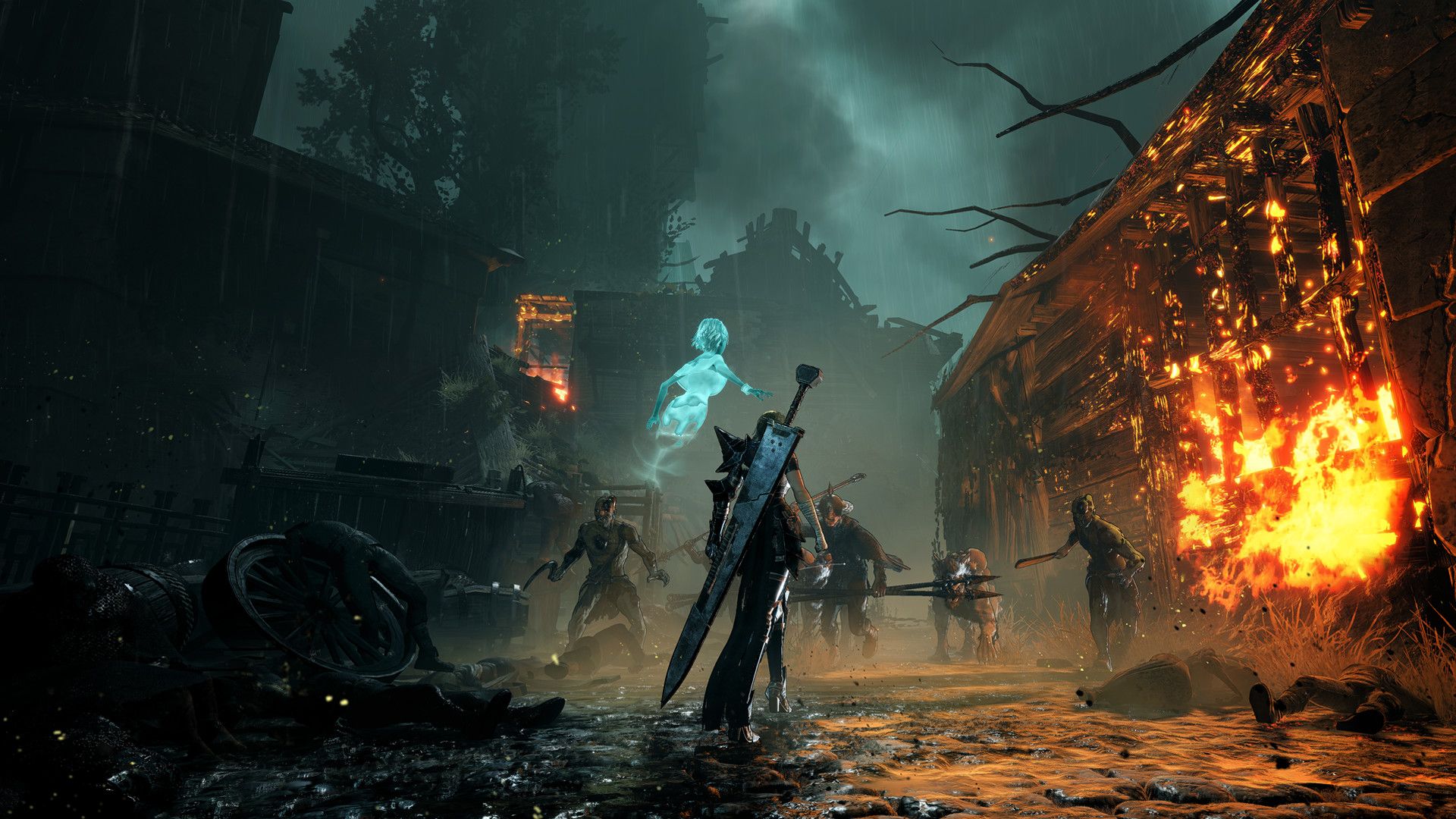Soulstice Interview – Combat, World, and More
A solid character action game, when it combines bright ideas with top-notch execution, can take your breath away, and based on all that we’ve seen of it so far, it certainly seems like Reply Game Studios’ Soulstice will fit that description. Starring sisters Briar and Lute as protagonists, Soulstice will see players controlling both in synergy in high-octane, action-packed battles against challenging foes in what’s looking like a gorgeous and well-realized fantasy world. Ahead of its imminent launch, we recently reached out to Soulstice’s developers to learn more about the game and what makes it tick. Below, you can read our interview with creative director Fabio Pagetti.
"Soulstice is a character action game, and this genre comes with some very specific “rules”: a fast-paced and responsive combat system, combos, multiple weapons, boss fights, and so on. We meant to meet such expectations, but we also wanted to add something fresh and unique to this mix."
Soulstice’s central gameplay premise is a fascinating one, with players being tasked with controlling two characters at the same time. How did the idea for that first come about, and how challenging has it been to ensure that it’s properly executed in gameplay?
Soulstice is a character action game, and this genre comes with some very specific “rules”: a fast-paced and responsive combat system, combos, multiple weapons, boss fights, and so on. We meant to meet such expectations, but we also wanted to add something fresh and unique to this mix. That’s where our dual character system came into play. It was part of the concept from the very beginning, and the decision to involve two sisters came shortly afterwards. On the other hand, it was not a simple or a quick process to strike the proper balance between the Player’s actions (who mainly controls Briar, the Ashen Knight) and the AI-driven support of Lute, the Shade. Eventually, we decided to evolve Lute’s role as a combination of automatic actions performed by her, contextual reactions based on combat prompts, and the manual use of her blue and red fields, which make it possible to interact with certain enemies and elements in the environment.
Combining Lute and Briar’s unique abilities in combat is clearly going to be a crucial aspect of the game. Can you talk us through how the game uses the idea in terms of mechanics? For instance, is mixing and matching their abilities and experimenting with different combinations something that the game emphasizes?
It may sound like a paradox, but we felt that we wanted two characters to strengthen our single player combat experience. Lute helps Briar with counters, crowd control, defense and buffs. The Player will be able to actually “build” her in different ways, to find the setup that best matches their own playstyle. In other words, Lute helps the Player take a more proactive stance, instead of just reacting to the enemies’ actions. Moreover, if the Player manages to mix Briar’s and Lute’s abilities successfully, the sisters will gain momentum and their “Unity” will increase. A higher Unity causes Lute to become more effective, e.g. targeting multiple enemies at a time. Moreover, Unity can also trigger special “Synergy Attacks”, which cause Briar and Lute to strike together, but that’s not all. When their Unity is high enough, Briar and Let can even enter an enhanced battle trance called “Rapture”.
"It may sound like a paradox, but we felt that we wanted two characters to strengthen our single player combat experience."
What should players expect from Soulstice in terms of enemy design and variety, especially when it comes to boss fights?
This is an aspect of the game we really care about, and we have worked hard to create a diverse roster of enemies, one that could make for an engaging combat experience, throughout the whole game. Moreover, each enemy belongs to one of three different classes: the Corrupted, the Wraiths and the Possessed. The Corrupted come in different varieties, but they are always vulnerable to Briar’s attacks. Wraiths and Possessed, however, are a different story: Briar can’t actually harm them if they are not under the influence of Lute’s Evocation or Banishment Field. In particular, the (blue) Evocation Field causes invisible Wraiths to coalesce and become vulnerable, while the (red) Banishment Field is needed to face the otherwise invincible Possessed. Then again, the most powerful Possessed will release the Wraiths haunting them when defeated, and the Player will have to destroy them for good, before they have the chance to inhabit their husk again. All in all, we created an array of different elements that could work well together, and that we could mix to create interesting situations in any given battle.
In this perspective, our bosses are meant to be the proverbial icing on the cake. Each boss is going to be unique, and the battles against them always feature specific mechanics and challenges, which must be overcome in order to defeat them.
What approach does Soulstice take to its world design and exploration? How large will the city of Ilden be, and how freely will players be able to explore its environments?
The main focus of the experience is on combat, so the structure of the levels is pretty linear. There will still be some detours and secrets to find, however, as well as environmental puzzles to vary the pace of the experience. Exploration sessions are also defined by the use of some fixed cameras, which helped us give a more “cinematic” direction to the whole game, with some nice vistas of the city you are fighting your way through.
"The main focus of the experience is on combat, so the structure of the levels is pretty linear. There will still be some detours and secrets to find, however, as well as environmental puzzles to vary the pace of the experience."
How much of an emphasis will Soulstice put on its story and storytelling? What kind of a balance will it strike between its large-scale and overarching narrative elements and the more personal story of the two sisters?
As we started working on the lore of Soulstice, we gave ourselves two main rules: the most important gameplay elements should have a meaning related to the narrative, and the narrative of the game should always be consistent with the gameplay experience. In other words, we wanted to make sure that the story could be an added value to the player’s experience, rather than a distraction or a burden. That said, once we established the basics of the game, we had the opportunity to develop the story of Soulstice through different layers. One layer is about the mission that Briar and Lute have been given: the events, the characters and the challenges they must face as they try to reclaim the Sacred City of Ilden. Another layer is about what actually happened there, how the city fell to the Spawn of Chaos, and why. But there is also a third and final layer that deals with the intimate relationship between the two sisters, with the pain and the traumas they had to endure to become a Chimera. Eventually these different streams merge into one, and we hope that the Player will enjoy the narrative of Soulstice as a nice seasoning to the action-packed main course they found on the menu!
* This article was originally published here




Comments
Post a Comment